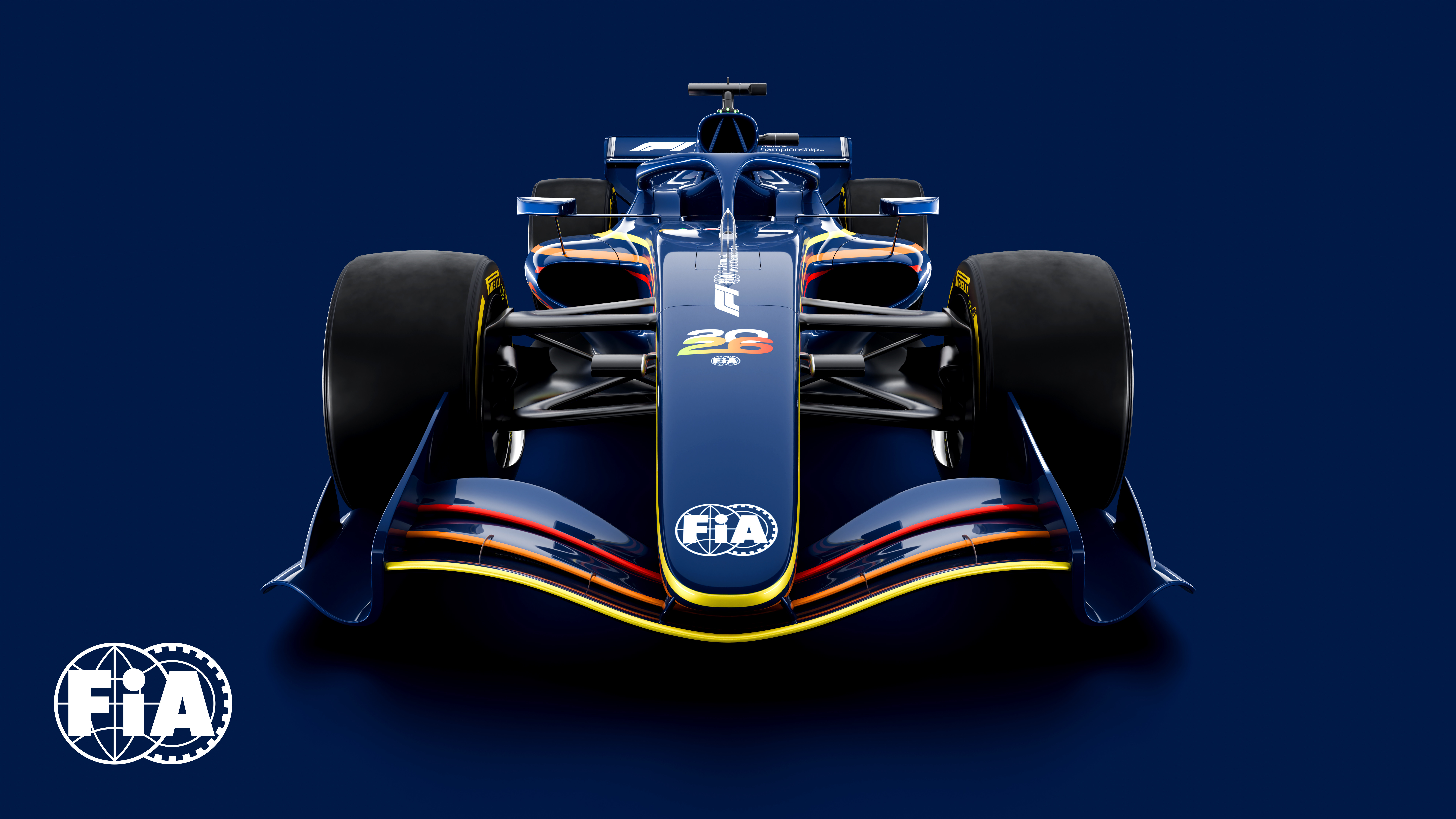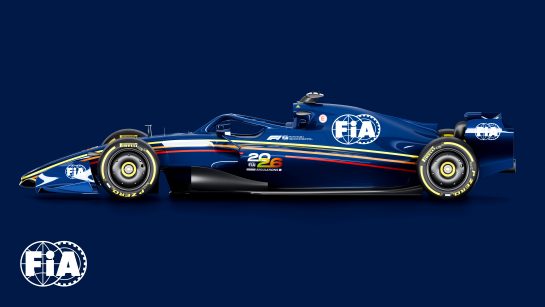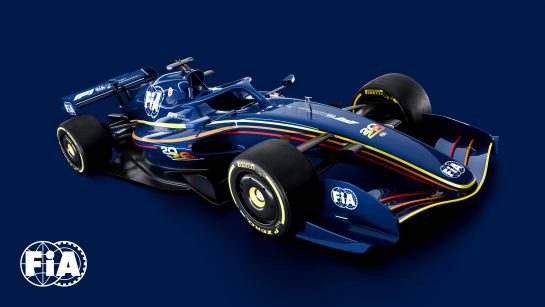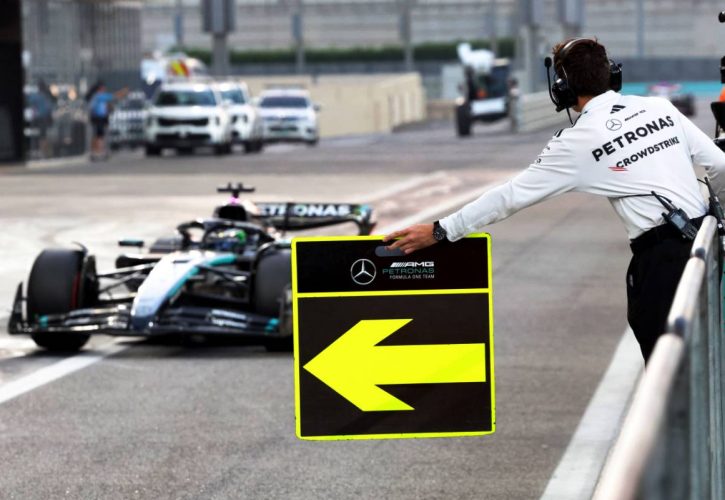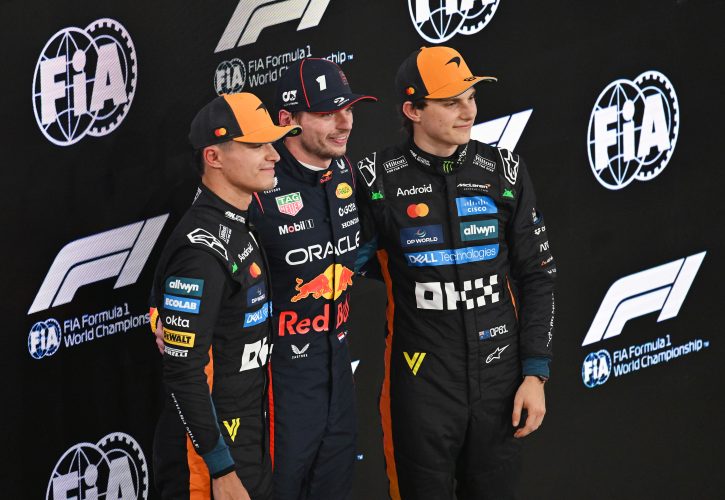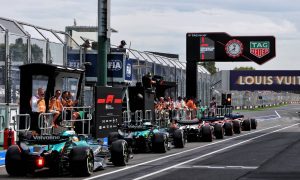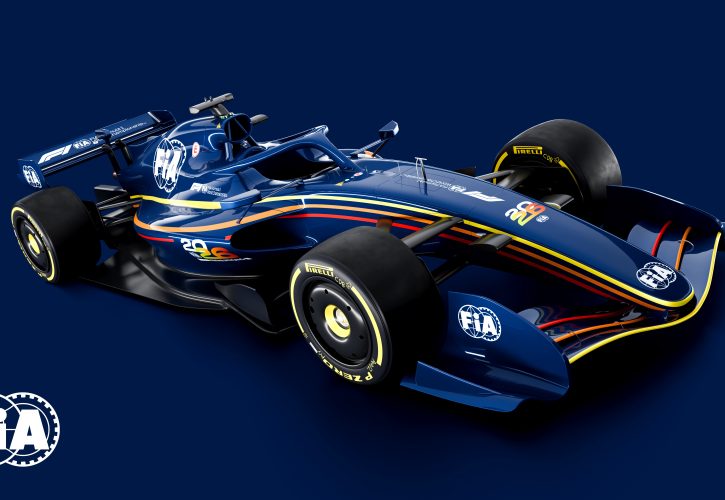
The FIA has revealed the first images of the F1 car concept that will be introduced in 2026 and an overview of the dramatic technical regulations that will reshape the future of the sport.
The new F1 cars will be 30kg lighter than the current models, featuring active aerodynamics and a more compact and “nimble” design.
The wheelbase will be reduced from 3600mm to 3400mm, and the width from 2000mm to 1900mm. Additionally, the maximum floor width will be decreased by 150mm.
Although F1 will continue using the 18-inch wheel size introduced in 2022, the front tyre width will be reduced by 25mm and the rear tyres by 30mm, with the aim of maintaining grip levels.
To ensure the chassis aligns perfectly with the new engine regulations and to improve the ability of cars to follow each other, downforce will be cut by 30% and drag by 55%.
Key aerodynamic features, including moveable wings, have been designed to minimize the detrimental dirty air effect.
Changes include a narrower front wing, the elimination of front wheel arches, and in-washing wheel wake control boards in front of the sidepods.
At the rear, there will be a three-element active rear wing with simplified endplates, and the lower beam wing will be removed. F1’s Drag Reduction System (DRS) will no longer feature on the 2026 cars.
F1's 'Active Aerodynamics' system will involve movable front and rear wings that will result in greater cornering speeds with standard Z-Mode deployed. On straights drivers will be able to switch to X-Mode, a low-drag configuration designed to maximise straight-line speed.
The future designs will also have a partially flat floor and a lower-powered diffuser to reduce ground effect – a significant shift away from Grand Prix racing’s current aero platform, making performance less dependent on ultra-stiff, low ride-height setups.
Enhanced safety features will include a two-stage front impact structure and improved side intrusion protection. The roll hoop load capacity will increase from 16G to 20G, and rear wing endplate lights will be brighter.
"With this set of regulations, the FIA has sought to develop a new generation of cars that are fully in touch with the DNA of Formula 1," commented Nikolas Tombazis, the FIA’s single-seater director.
"Cars that are light, supremely fast and agile but which also remain at the cutting edge of technology, and to achieve this we worked towards what we called a 'nimble car' concept.
"Lighter, more powerful and more focused on driver skill, the 2026 FIA Formula One Technical Regulations have been designed to provide closer racing among drivers, increase the competition between teams and to improve the spectacle."
As a reminder, from 2026 Formula 1 power units will run on fully sustainable fuel, underscoring the sport’s commitment to environmentally responsible racing and setting a new standard for motorsport.
“This fuel will be ‘drop-in’, meaning it can be used in almost any ICE-powered vehicle, offering a potentially game-changing solution to greenhouse gasses in the transportation sector,” states the FIA.
“By 2030 there will be 1.2bn ICE cars on the road worldwide and the fuel developed for Formula 1 could be used to reduce emissions on an industrial scale.”
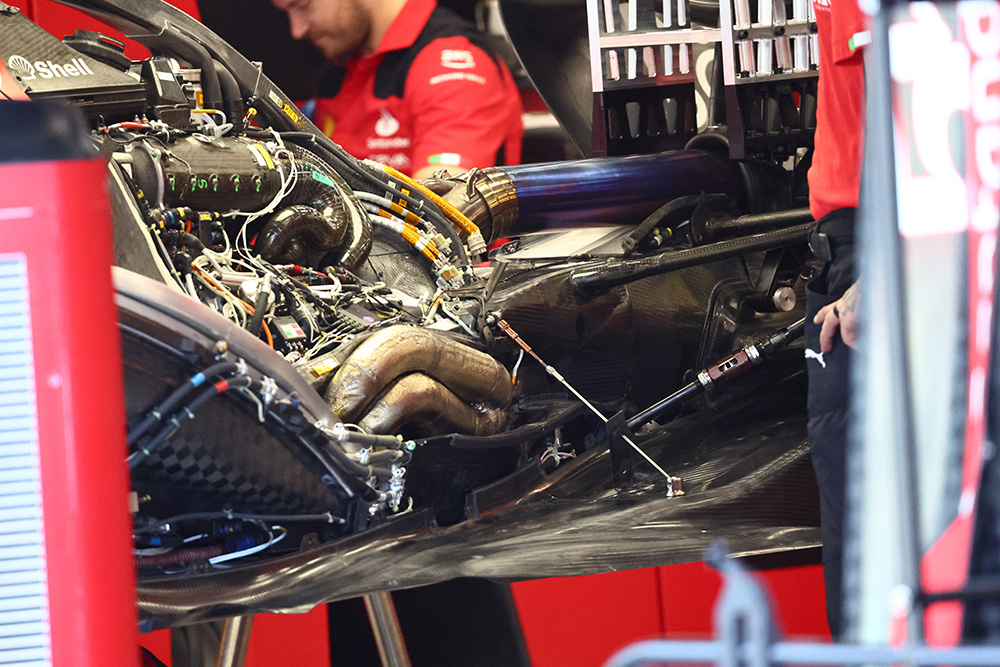
But sustainability will also be enhanced through greater use of electric power in the 2026 power units and a shift to towards a 50% electrical and 50% thermal power distribution.
"Our aim, together with Formula 1, was to produce a car that was right for the future of the sport's elite category. We believe we have achieved that goal,” said FIA president Mohammed Ben Sulayem.
“The Power Unit Regulations have already resulted in a record number of PU manufacturers committing to the sport.
“And now, in tandem with chassis regulations that provide for lighter, more agile cars featuring innovative aerodynamic solutions, we have created a set of regulations designed to not only improve racing but also to make the championship even more attractive to PU manufacturers, OEMs and existing competitors.”
Formula 1's 2026 technical regulations are set to be officially ratified by the FIA's World Motor Sport Council later this month on June 28.
Keep up to date with all the F1 news via Facebook and Twitter

